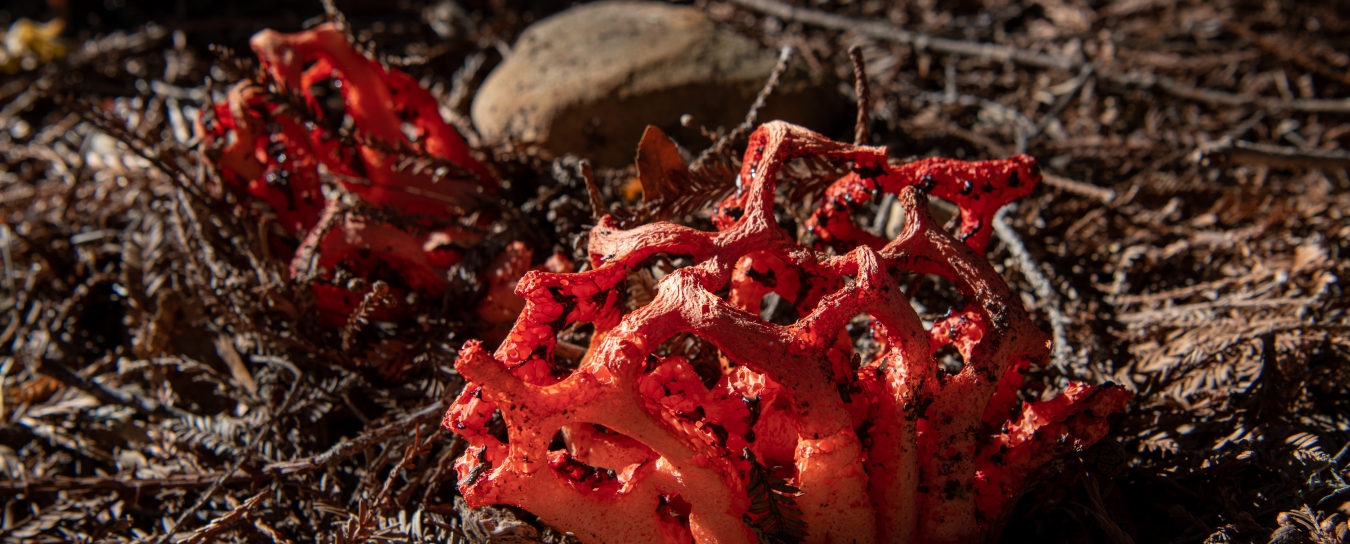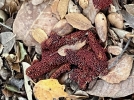
Fungi
Our fungi identifications are courtesy of fungi expert Bob Cummings, who teaches in the Botany Department at Santa Barbara City College in the Biological Sciences. Before you ask, check to see if your fungus has been identified below.
- Anthropology
- Rocks & Fossils
- Invertebrates
- Vertebrates
- Botany
- Astronomy
- Fungi
- General
- Recently Asked
Crazy colorful fungi or slime mold?
Dear experts,
I photographed these amazingly colorful red and yellow things growing in the leaf litter near my home in Solvang. Never seen anything quite like this before. What are they?
There was a dead squirrel nearby. Is there any connection?
Thank you,
Pat


Curator Response
Hi Pat,
Thanks for sharing your mystery organism! Whenever we have a question along these lines, we ask Bob Cummings, who teaches in the Botany Department at Santa Barbara City College in the Biological Sciences. Here's his ID:
"Hi Pat,
This is a plasmodial slime mold, Leocarpus fragilis (sometimes called the 'insect egg slime mold.') One photograph shows the bright yellow, slimy plasmodial phase, which is technically a single huge multinucleate cell. It moves by creeping over the substrate, engulfing bacteria and small bits of organic matter. Factors such as drying lead to the plasmodium cleaving up into tiny sporangia (other photo), which complete the life cycle by releasing spores.
Slime molds were traditionally (and still are in many cases) studied by mycologists. Before more sophisticated methods of classification were available, it seemed reasonable that slime molds should be grouped with the fungi, since their sporangia resembled tiny mushrooms and released spores. Chemical, structural and genetic analyses eventually revealed that these organisms are more accurately placed within the animal kingdom, in the phylum Amoebazoa.
Plasmodial slime molds are not known to cause human diseases. The spores produce soil amoebae, which fuse to produce zygotes, which grow, become multinucleate and fuse with other zygotes to produce the plasmodium, which can grow to huge sizes, limited only by food and moisture...hence my old slime mold racing days at SBCC.
Students covered whole lab tables with agar on a Friday, carved lanes in the agar and placed small plasmodia at one end, placed oat flakes down the tracks. They would grow the whole length of the table over the weekend. We would all bet on our entries, and had awards for a 100mm dash, 220mm, a 440mm, and of course a 26-inch marathon. Great fun.
But I digress. Even in the soil amoeba stage, they are apparently not associated with disease in humans (and presumably other mammals). Slime molds are ubiquitous and abundant, so I would imagine any link to diseases would have been shown by now.
Plasmodia ingest bacteria, so the dead squirrel probably would be a good source."

